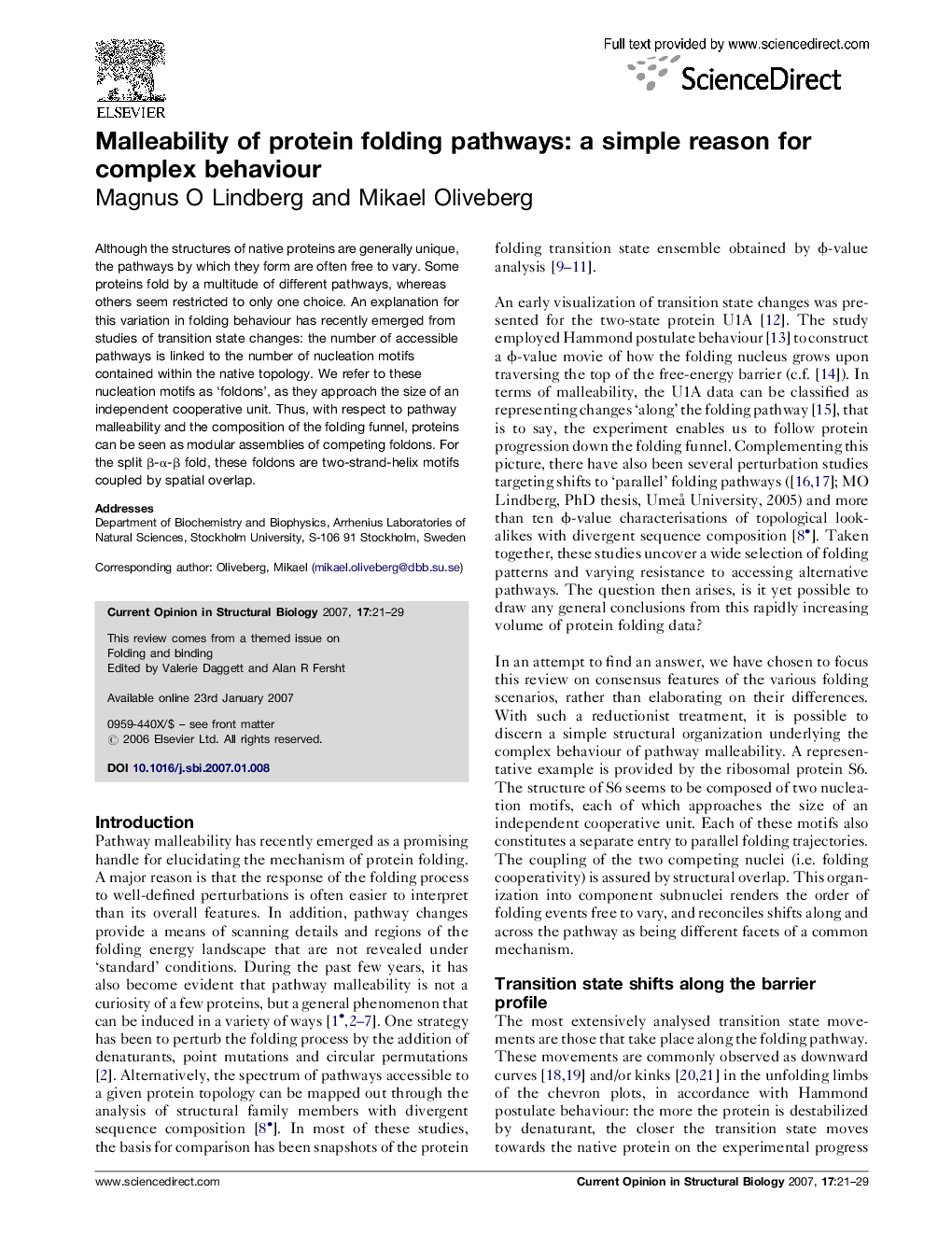| Article ID | Journal | Published Year | Pages | File Type |
|---|---|---|---|---|
| 10822677 | Current Opinion in Structural Biology | 2007 | 9 Pages |
Abstract
Although the structures of native proteins are generally unique, the pathways by which they form are often free to vary. Some proteins fold by a multitude of different pathways, whereas others seem restricted to only one choice. An explanation for this variation in folding behaviour has recently emerged from studies of transition state changes: the number of accessible pathways is linked to the number of nucleation motifs contained within the native topology. We refer to these nucleation motifs as 'foldons', as they approach the size of an independent cooperative unit. Thus, with respect to pathway malleability and the composition of the folding funnel, proteins can be seen as modular assemblies of competing foldons. For the split β-α-β fold, these foldons are two-strand-helix motifs coupled by spatial overlap.
Related Topics
Life Sciences
Biochemistry, Genetics and Molecular Biology
Biochemistry
Authors
Magnus O Lindberg, Mikael Oliveberg,
